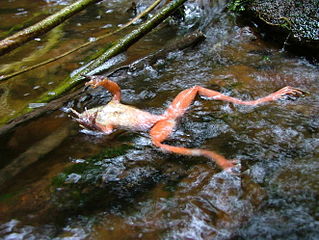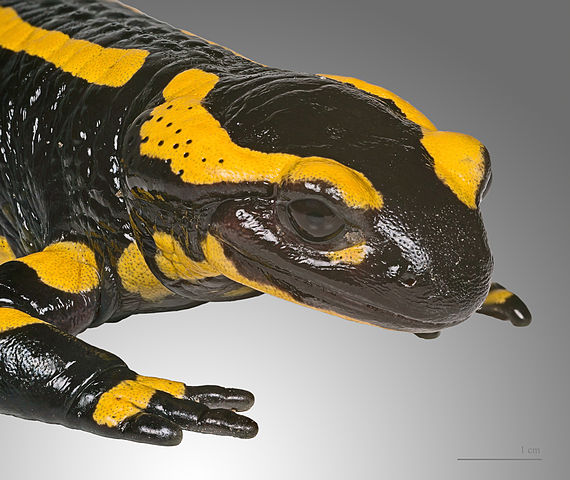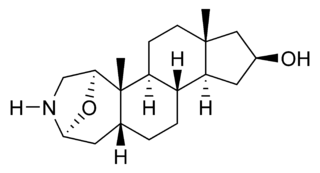Salamandra salamandra - Fire Salamander
Venom
Venom is an essential defense mechanism
The venom produced by Salamandra salamandra is secreted through parotid glands around the head region and along its back in two rows. These glands are shown very well in the picture to the right.
Fire salamanders produce two types of neurotoxins, the alkaloids samandarine and samandarone. The more commonly secreted venom of the two is samandarine. The chemical structure for this alkaloid toxin is shown in the photo below. These chemicals are metabolically produced in the liver, testes and ovaries.
These organisms produce toxins only as adults; meaning the larvae are not toxic at all and therefore have fewer defenses against predators. The skin of larvae lacks the specific granular glands needed in the secretion of venom, and are developed later in life, after metamorphosis has occured.
Microbial/Other Defenses
 The venom secreted is not only a defense against being eaten, but
also a defense against microbial attack. The parasitic fungi,
Chytridiomycota, is a notorious killer of amphibians. This fungi
will grow on their semi-permeable skin, until no air or water can get in
or out, and the amphibian will eventually die of suffocation. Fire
salamanders are more protected from this disease than other amphibians
that do not produce these toxins. On another interesting note, the
mucous-like venom secreted will also somewhat protect the fire
salamander from fire. In the presence of fire, they will coat
their bodies entirely with their venom, and it will allow them to safely
escape without being burnt in the mean time. For more on this, see
Fun Facts.
The venom secreted is not only a defense against being eaten, but
also a defense against microbial attack. The parasitic fungi,
Chytridiomycota, is a notorious killer of amphibians. This fungi
will grow on their semi-permeable skin, until no air or water can get in
or out, and the amphibian will eventually die of suffocation. Fire
salamanders are more protected from this disease than other amphibians
that do not produce these toxins. On another interesting note, the
mucous-like venom secreted will also somewhat protect the fire
salamander from fire. In the presence of fire, they will coat
their bodies entirely with their venom, and it will allow them to safely
escape without being burnt in the mean time. For more on this, see
Fun Facts.
Effects of the Toxins
If threatened, S. salamandra has the ability to squirt or spray its venom up to a foot away. As the toxins secreted or sprayed are neurotoxins, they will first cause a local anesthetic effect, eventually attacking the central nervous system, more specifically the spinal cord itself. Overall, this toxin causes muscle convulsions, hypertension, and respiratory paralysis. Usually there is no major threat to humans, as long as the toxin is not ingested. However, when handling this organism, most people will wear gloves, as the toxin may cause minor skin irritation.
Now that we have discussed the Venom produced by fire salamanders, let's next look at some Fun Facts
You can return to species Interactions or the Home page here.

